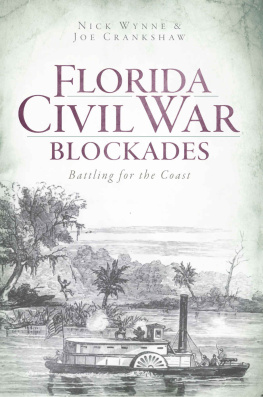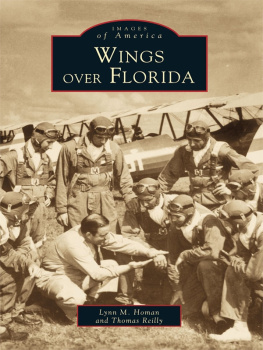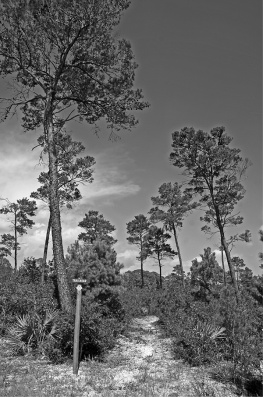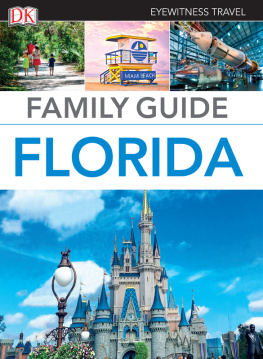Florida Association of Museums - Florida Civil War Heritage Trail
Here you can read online Florida Association of Museums - Florida Civil War Heritage Trail full text of the book (entire story) in english for free. Download pdf and epub, get meaning, cover and reviews about this ebook. year: 2011, publisher: Dept. of State Division of Historical Resources, genre: Politics. Description of the work, (preface) as well as reviews are available. Best literature library LitArk.com created for fans of good reading and offers a wide selection of genres:
Romance novel
Science fiction
Adventure
Detective
Science
History
Home and family
Prose
Art
Politics
Computer
Non-fiction
Religion
Business
Children
Humor
Choose a favorite category and find really read worthwhile books. Enjoy immersion in the world of imagination, feel the emotions of the characters or learn something new for yourself, make an fascinating discovery.

- Book:Florida Civil War Heritage Trail
- Author:
- Publisher:Dept. of State Division of Historical Resources
- Genre:
- Year:2011
- Rating:4 / 5
- Favourites:Add to favourites
- Your mark:
- 80
- 1
- 2
- 3
- 4
- 5
Florida Civil War Heritage Trail: summary, description and annotation
We offer to read an annotation, description, summary or preface (depends on what the author of the book "Florida Civil War Heritage Trail" wrote himself). If you haven't found the necessary information about the book — write in the comments, we will try to find it.
Florida Civil War Heritage Trail — read online for free the complete book (whole text) full work
Below is the text of the book, divided by pages. System saving the place of the last page read, allows you to conveniently read the book "Florida Civil War Heritage Trail" online for free, without having to search again every time where you left off. Put a bookmark, and you can go to the page where you finished reading at any time.
Font size:
Interval:
Bookmark:
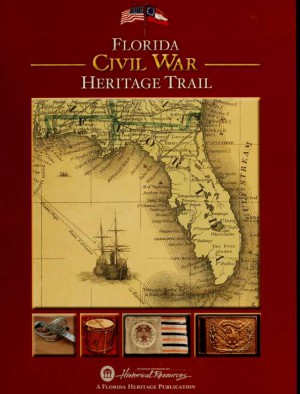



FLORIDA IN THE CIVIL WAR
Florida's role in the Civil War has not been as extensively examined as that of other Southern states, though in the past several decades it has received more scholarly attention. In many respects it remains the forgotten state of the Confederacy, just as it was during the 1860s, when a Northern newspaper referred to it as the "smallest tadpole in the dirty pool of secession."
Having ended its territorial period only in 1845 and still very much a frontier at the time of the Civil War, Florida nonetheless displayed characteristics of the other Deep South states of the Cotton Kingdom. A plantation belt, similar to that found in South Carolina,
Secession Convention
Florida's Secession Convention began meeting in the state capitol on January 3,1861. Delegates who opposed immediate secession, known as "cooperationists", introduced a proposal to have the convention's actions ratified in a statewide election, but it was not adopted. Instead the convention determined that it had the power to secede without ratification by popular vote. On January 9, the convention listened to a draft Ordinance of Secession, found it too ambiguous, and directed a committee to make revisions. The final version proclaimed Florida "a Sovereign and Independent Nation." Cooperationists made a series of last-ditch amendments, but they were defeated. The final vote on January 10 showed 62 delegates in support and seven opposed to secession.
On January 11,1861, the delegates signed the document. An emotional moment occurred when cooperationist George T. Ward, who would die the following year at the Battle of Williamsburg, stated: "When I die I want it inscribed on my tombstone that I was the last man to give up the
Georgia, Alabama, and Mississippi, ran through the north-central portion of the peninsula from Marianna to Ocala. The 1860 census reported that Florida had a total population of only 140,424 with nearly 45 percent (61,745) of those being slaves. The largest settlements in Florida included Pensacola, Marianna, Apalachicola, Quincy, and Tallahassee in the west; Monticello, Madison, Lake City, Ocala, and Gainesville in the central portion of the state; Fernandina, Jacksonville, and St. Augustine along the east coast; and Key West in the south. With the exception of Key West, the southern half of the state was sparsely settled and consisted of a few small towns

Florida Ordinance of Secession, 1861.
(Image courtesy of the Stale Archives of Florida)
ship." James Owens countered with: "Unlike my friend Colonel Ward, I want it inscribed that I was the FIRST man to quit the rotten old hulk." With the document's signing, Florida became the third state to withdraw from the Union and soon became a member of the new Confederate States of America.
To learn more, see: "The Florida Secession Convention" by Ralph A. Wooster, The Florida Historical Quarterly, Vol. 36, No. 4, April 1958.
concentrated around current or former military outposts. Some sugar production took place in the Manatee River area, and the southern region was also home to thousands of cattle that ranged the scrublands and swamps, awaiting shipment to Cuba or elsewhere.
By the early-to-mid 1800s, sectional disputes over slavery along with economic and political differences threatened national unity. These issues intensified in the decade following the Mexican War of 1846-1848 and culminated in 1860 with Republican Abraham Lincoln's election to the presidency. In the voting, Floridians supported Southern Democrat John C. Breckenridge over Constitutional Unionist candidate John Bell by a count of 8,543 to 5,437, while Lincoln did not even appear on the ballot in the South. In the gubernatorial race, Democrat John Milton defeated Constitutional Unionist Edward Hopkins by a comfortable margin. Milton, however, would not take office for one year; consequently Governor Madison Starke Perry would call for elections to a Secession Convention, to meet in Tallahassee in early 1861.
When the Secession Convention convened on January 3, 1861, a majority of the delegates seemed to support immediate secession, though a few opposed the concept completely and others supported it only in cooperation with other Southern states. Despite efforts of the latter groups, the convention voted 62-7 on January 10 to withdraw from the Union, making Florida the third state to do so after South Carolina and Mississippi. The following day they signed the Ordinance of Secession, temporarily making Florida an independent nation, though it would join the new Confederate States of America within a month. Throughout the state,

Confederate artillery battery at Pensacola, 1861. (Image courtesy ol the State Archives of Florida)
secessionists celebrated the action, though Unionists like former territorial governor Richard Keith Call deplored the act. "You have opened the gates of Hell," he shouted to his detractors, "from which shall flow the curses of the damned which shall sink you to perdition."
At the time of the state's secession, Florida militia occupied Federal facilities around the state, taking control of the arsenal at Chattahoochee, Fort Clinch near Fernandina, and Fort Marion in St. Augustine. In Pensacola, Southern troops occupied Fort McRee, Fort Barrancas, and the Pensacola Navy Yard, leaving only Fort Pickens on Santa Rosa Island in Federal hands. At the southern end of the Florida peninsula, the Union retained Fort Jefferson in the Tortugas and Fort Taylor at Key West. These two locations later proved to be important points for the Union in enforcing the blockade of the Florida coast.
During the period from January through April 1861, tensions rose higher as the sectional crisis deepened with the secession of seven states and the formation of the Confederate States of America. For several months in early
1861, national attention was focused on Pensacola, as the possibility existed that hostilities might erupt there first. Instead the first fighting would occur in Charleston Harbor, with the April 1861 bombardment and surrender of Fort Sumter. Following its surrender, President Lincoln called for 75,000 troops to suppress the rebellion and four additional states joined the infant Confederacy.
Meanwhile, in Florida, Confederate troops strengthened their positions in an effort to force the Union troops out of Fort Pickens. No major fighting took place, however, until the night of October 8-9, when a Confederate force landed on Santa Rosa Island and attacked a Union camp. After a brisk engagement they soon withdrew, with casualties for the two sides numbering about ISO. Subsequently, artillery bombardments occurred in November 1861 and in January 1862, but no further attempt was made In the Confederates to capture Fort Pickens.
In the spring of 1862, following reverses in die western theater of the war,
Confederate troops withdrew from much of Florida, including Fernandina, St.
Augustine, and Pensacola. In March 1862,
Font size:
Interval:
Bookmark:
Similar books «Florida Civil War Heritage Trail»
Look at similar books to Florida Civil War Heritage Trail. We have selected literature similar in name and meaning in the hope of providing readers with more options to find new, interesting, not yet read works.
Discussion, reviews of the book Florida Civil War Heritage Trail and just readers' own opinions. Leave your comments, write what you think about the work, its meaning or the main characters. Specify what exactly you liked and what you didn't like, and why you think so.

